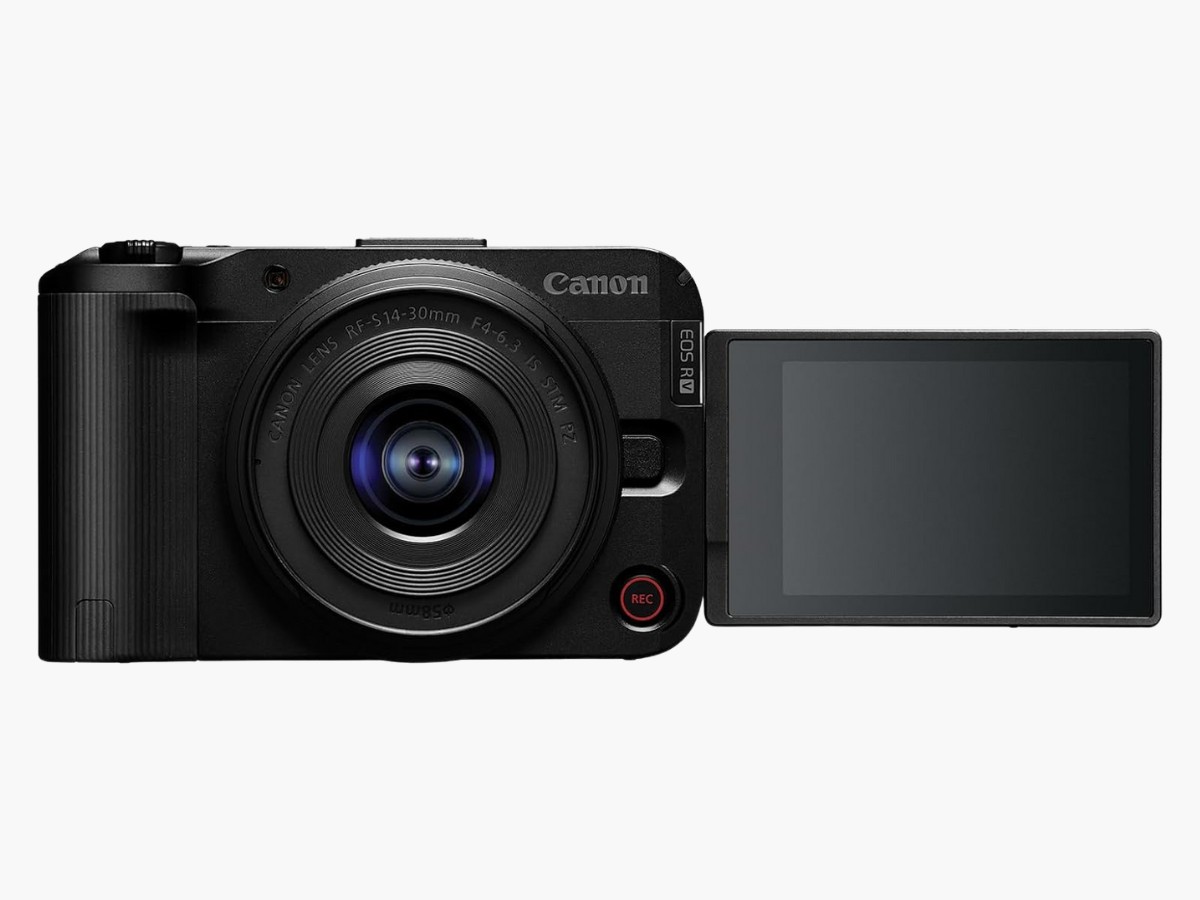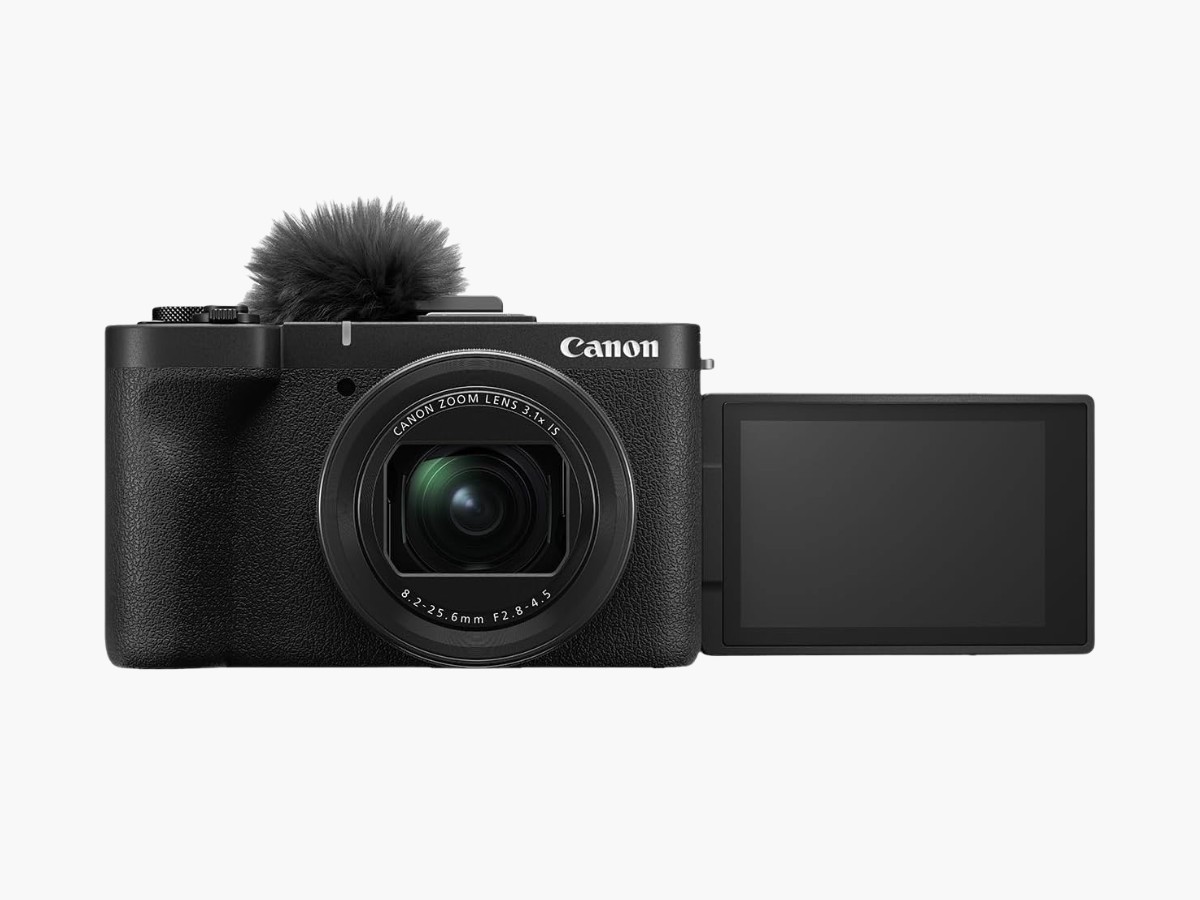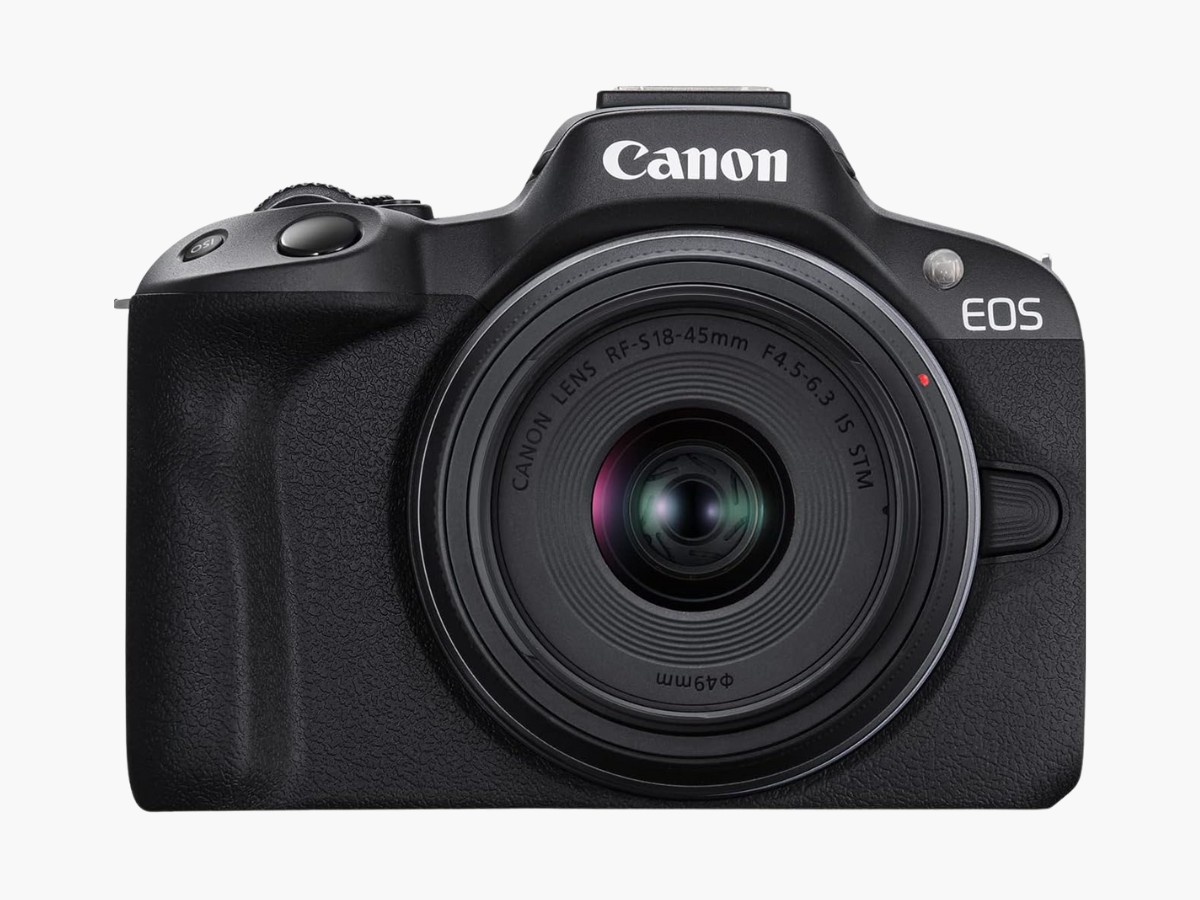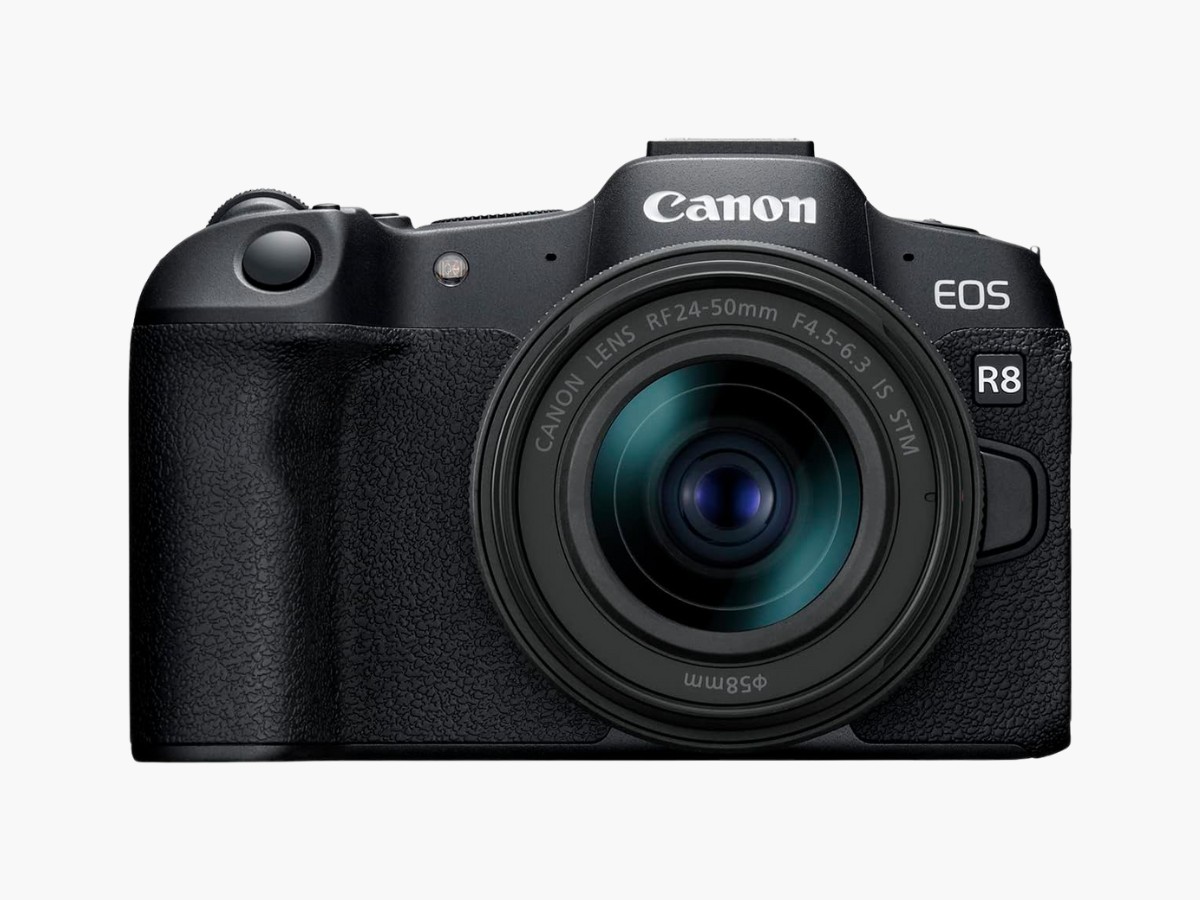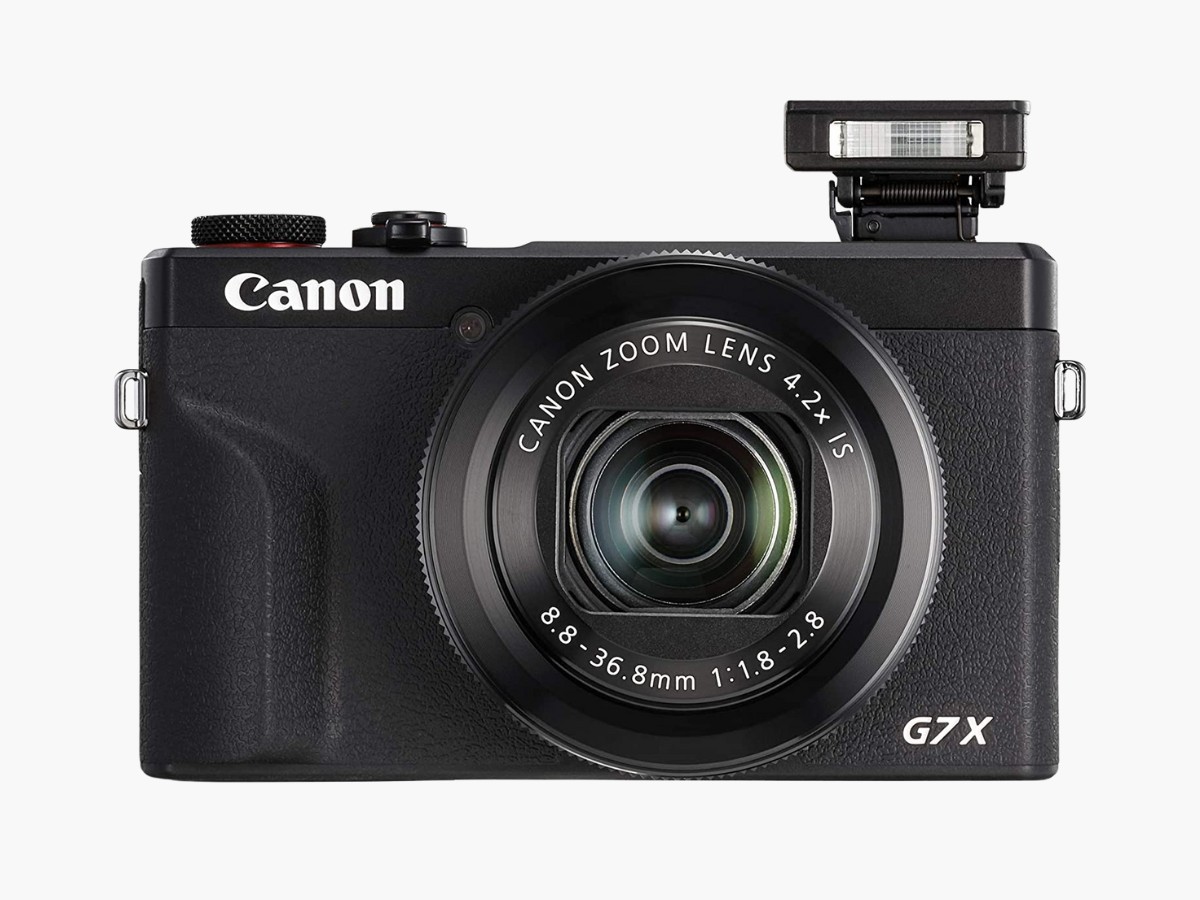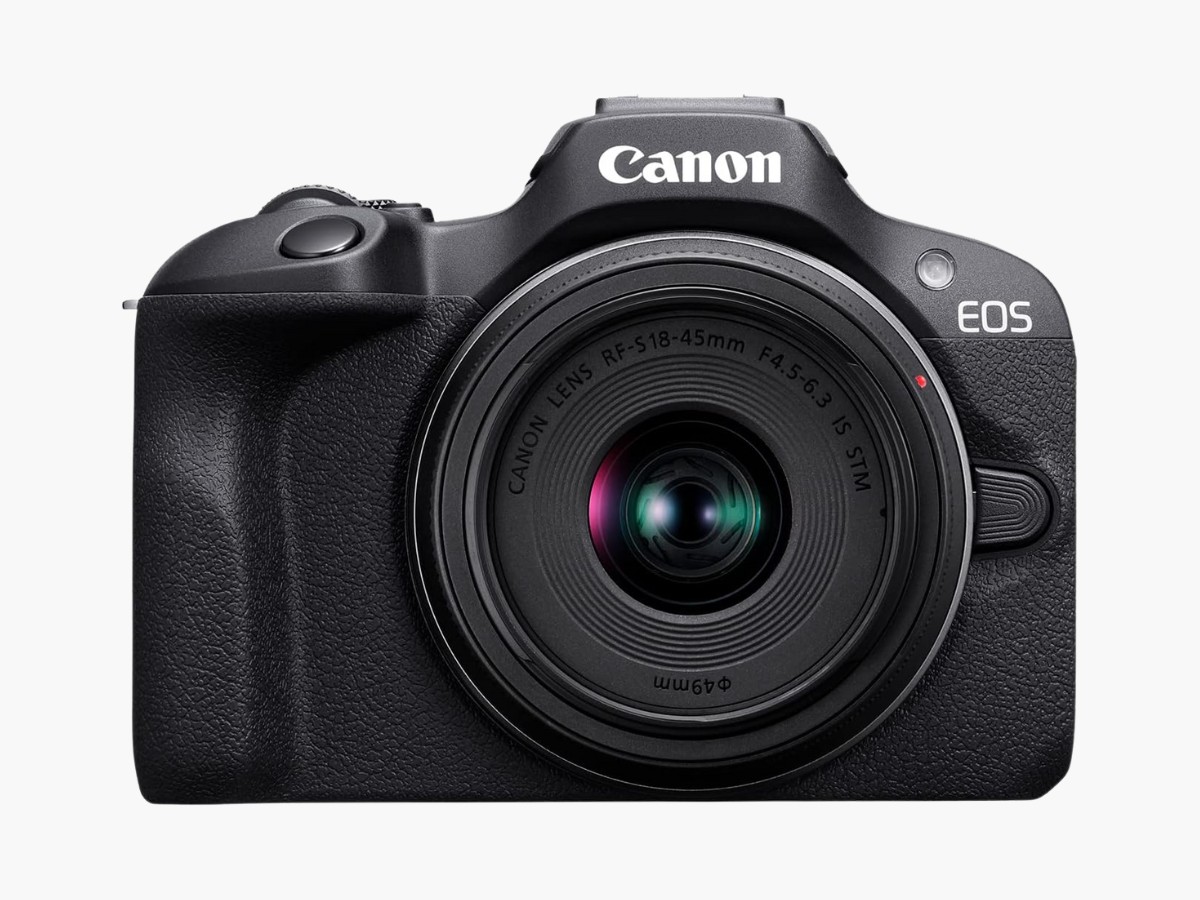The 5 Best Canon Vlog Cameras and Video Creator Kits
Canon newest vlogging cameras pack specialized features that help content creators make high quality vlogs while keeping things simple to use. Canon makes dedicated vlogging cameras that address specific challenges content creators face. Canon vlog cameras include features like 4k video recording, built-in stands, direct live streaming, and automatic focus switching for product demonstrations.
You might start with a smartphone, but Canon’s vlogging lineup offers clear advantages when you’re ready for quality vlogs. The PowerShot V10 records 4K UHD video at 30fps in a pocket-sized body, while the EOS R50 V captures 4K footage with 6K oversampling from its 24.2MP APS-C sensor. Each camera targets different types of content creation, from travel vlogs to social media posts to professional YouTube channels.
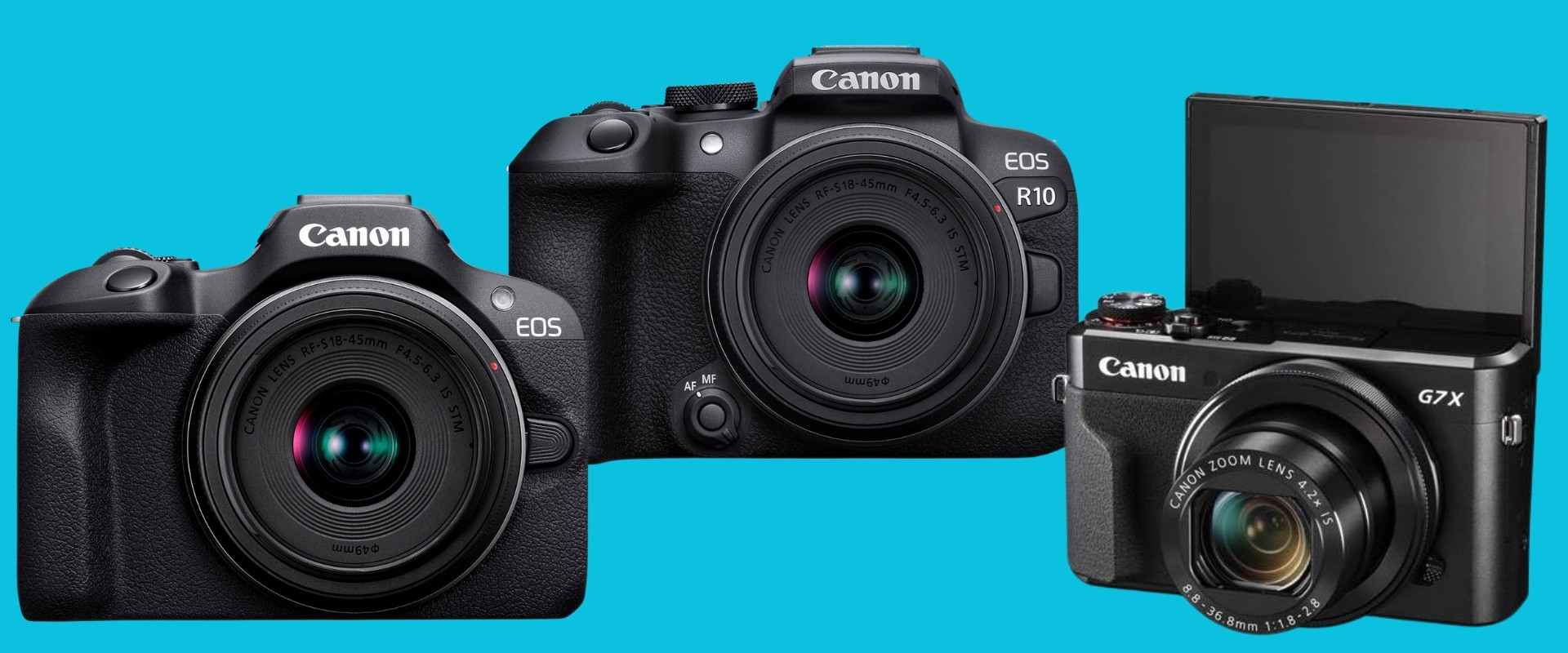
We’ve tested Canon’s newest vlogging camera lineup to help you choose the right model for your vidoe creation needs. Our picks range from lightweight options weighing just 375g to full-frame systems with cinema-grade capabilities. Rather than ranking them from best to worst, we’ve identified which camera works best for different shooting conditions and creator needs.
Best Canon Vlogging Camera
The Canon EOS R50 V is the best Canon vlog camera we’ve tested. Thanks to its video creators features specifically designed for TikTok, Instagram Stories, and other vlogging platforms. It shoots both horizontal and vertical content simultaneously. The 24.2-megapixel APS-C CMOS sensor paired with Canon’s DIGIC X image processor captures footage that works across different platform requirements without forcing you to choose between YouTube’s horizontal format and TikTok’s vertical orientation. The sensor size matches those found in professional cinema cameras like the EOS C70—substantially larger than smartphone sensors.
6K oversampling creates exceptionally detailed 4K video. The camera captures raw footage at 6K resolution before downsampling to 4K output. This process results in sharper 4K video with better color accuracy and less noise compared to cameras that record 4K directly. For professional workflows, the camera records in broadcast-standard XF-HEVC S and XF-AVC S formats.
The dual tripod mounting system solves the vertical video problem. The vertical mount on the camera’s grip lets you set up properly for TikTok and Instagram Stories without awkward rigging solutions. One-button livestreaming eliminates setup complexity. The dedicated Livestreaming button provides instant access to streaming options, offering four different methods:
- Direct USB-C connection to a PC
HDMI connection via a switcher - Wireless connection to smartphones through the Camera Connect app
- Multi-camera setups via the Live Switcher Mobile app
The camera automatically rotates on-screen menus based on orientation, so vertical shooting feels as natural as horizontal filming. The R50 V includes Canon Log 3 recording—unusual for a camera in this price range. This logarithmic gamma profile preserves more dynamic range in highlights and shadows, giving you flexibility during color grading that smartphone cameras can’t match.
Three distinct color modes let you choose your look:
- Traditional Picture Style profiles for EOS users
Custom Picture profiles matching Canon’s Cinema EOS system - Color Filter presets with 14 distinctive looks
- Cinema View mode creates widescreen content.
This dedicated mode records in 2.35:1 aspect ratio with film-like frame rates of 23.98fps (NTSC) or 25fps (PAL) for a more cinematic aesthetic.
The RF-S 14-30mm f/4-6.3 IS STM PZ pairs perfectly with the R50 V. This ultra-wide to standard zoom covers a 14-30mm focal range (22-48mm full-frame equivalent), suitable for everything from selfie-style vlogging to standard interview framing. Electronic power zoom enables smooth transitions. The built-in zoom function works via the camera’s top-panel zoom lever. You can customize zoom speed across 15 levels in both high and low-speed modes, creating smooth, cinematic zoom movements without the jerky motion of manual zooming. Built-in gyro sensors provide effective image stabilization that works with the camera’s digital stabilization for steady footage while walking.
At just 370g (13 oz) without a lens, the EOS R50 V works well for creators who shoot daily content across multiple platforms. It’s particularly suited for:
- TikTok and Instagram creators shooting frequent vertical content
- Live streamers who want direct streaming without additional software
YouTube creators seeking cinema-quality aesthetics
Product reviewers using the specialized Product Demo Mode - Multi-platform creators who need both horizontal and vertical options
If you create content primarily for mobile platforms but want better quality than smartphone cameras provide, the R50 V’s vertical-optimized features justify its specialized design.
Best Mid-Range Canon Vlogging Camera
If you’re looking for a mid range camera under $1000, the Canon PowerShot V1 is the best vlogging camera that ranks between digital and full interchangeable-lens cameras. This compact camera packs professional video features into a pocketable body, making it suitable for creators who need more capability than the PowerShot V10 offers. The V1 has a larger sensor than most compact cameras. Its 1.4-inch CMOS sensor measures 18.4 x 12.3mm—approximately twice the size of typical 1-inch sensors found in most compact cameras. This larger sensor captures still images at 22.3 megapixels and video at 18.7 megapixels, delivering better detail and improved low-light performance.
The sensor is essentially a variant of the one used in Canon’s EOS R7, providing ISO sensitivity up to ISO 32,000 for stills and ISO 12,800 for video. That’s two stops beyond what you get from the PowerShot G7 X Mark III, translating to noticeably cleaner footage in challenging lighting conditions. The built-in zoom lens covers a practical focal range. The 8.2-25.6mm lens delivers a 16-50mm full-frame equivalent for stills and 17-52mm equivalent for video. This range handles everything from wide-angle environmental shots to standard portraits in a single package.
The lens starts with a bright f/2.8 maximum aperture at the wide end, stepping down to f/4.5 at the telephoto end. Key features include:
- Wide-angle capability for vlogging and environmental shots
- Standard zoom range for product demonstrations
- 5-stop optical image stabilization for steady handheld shooting
- Subject tracking stabilization that keeps you centered in the frame
The autofocus system works across most of the frame. Canon’s Dual Pixel CMOS AF II system provides focusing speed and accuracy across approximately 90% of the frame horizontally and vertically. It detects and tracks eyes of humans and animals (cats/dogs), maintaining focus even with moving subjects. Unlike simpler vlogging cameras, the V1 provides full manual exposure controls (P/A/S/M modes), custom shooting modes, and advanced video options for creators looking to enhance their production quality.
Best Upper Mid-Range Canon Vlogging Camera
The Canon R10 vlog camera is the best option for creators who need fast, reliable shooting without spending professional camera money. This entry-level mirrorless camera offers burst rates and autofocus capabilities that outperform many competitors at this price point. The R10 records action exceptionally well. Its 24.2-megapixel APS-C sensor works with Canon’s DIGIC X processor to deliver up to 15 frames per second with the mechanical shutter or 23 fps with the electronic shutter. If you’re filming sports, pets, or any fast-moving subjects, this speed advantage makes a noticeable difference.
For video work, the camera records 4K footage oversampled from 6K. This process creates remarkably detailed video with reduced noise and artifacts—a significant step up from smartphone video quality. Sound quality gets attention here. The R10 includes built-in audio noise reduction that minimizes mechanical lens sounds during autofocus and reduces background white noise. While you’ll still want an external microphone for professional results, the built-in audio performs better than most cameras in this price range.
The camera includes a 3.5mm microphone input for connecting external mics when audio quality becomes more important to your production workflow. The R10 stays comfortable during long shoots. At 429g, it’s light enough for extended handheld filming without causing fatigue. The articulating touchscreen makes self-framing straightforward, and the wireless transfer capability via Canon
Best Budget Canon Vlogging Camera
The Canon EOS R50 is the best budget vlog camera we’ve tested. This compact mirrorless camera gives you the flexibility of interchangeable lenses with simplified controls that beginners can understand quickly—making it an excellent choice for content creators ready to step up from smartphones or compact cameras.
The EOS R50 uses a 24.2-megapixel APS-C CMOS sensor paired with Canon’s DIGIC X image processor. This combination captures images and videos with reduced noise, delivering clear, detailed results even in challenging lighting conditions. The APS-C sensor size—approximately three times larger than the 1-inch sensors found in many smartphones—contributes to superior image quality and more attractive background blur.
It’s ability to record 4K footage without cropping at up to 30 frames per second using the full sensor width. This footage is oversampled from 6K worth of data, resulting in exceptionally detailed video with minimized artifacts. Color reproduction remains accurate across various lighting situations, providing a professional look that smartphones cannot match.
The camera’s Dual Pixel CMOS AF II system divides the frame into up to 651 automatically-selected AF zones during Whole Area AF operation. This system covers approximately 100% of the frame horizontally and vertically, ensuring subjects remain sharp regardless of their position.
The autofocus recognizes different types of subjects. The R50’s deep learning technology enables it to track people (eyes, faces, heads, and bodies), animals (dogs, cats, birds, and horses), and vehicles (racing cars, motorcycles, aircraft, and trains). Even when shooting fast-moving subjects like athletes or pets, the camera maintains accurate focus with minimal input from the photographer. This intelligent system works reliably even when subjects are partially obscured or visible only in profile.
The R50 includes specialized modes designed specifically for content creators. The Movie for Close-up Demo Mode automatically shifts focus from the presenter to any object moved toward the camera lens—ideal for product demonstrations, makeup tutorials, or cooking videos. Once the demonstrated item is removed, focus immediately returns to the presenter’s face, enabling seamless single-take demonstrations without manual focus adjustments. It supports proper vertical video recording. The camera records vertical video with proper orientation information embedded. Videos filmed vertically play correctly on smartphones without requiring post-production rotation. This feature streamlines workflow for creators producing content primarily for mobile-oriented vlogging platforms.
The R50 can record continuously for up to one hour without interruption, allowing longer sessions without worrying about recording limits. The fully articulating touchscreen makes composition easy from virtually any angle, while built-in Bluetooth and Wi-Fi connectivity enables wireless file transfer to paired smartphones via the Canon Camera Connect app.
The EOS R50 simplified control layout makes it approachable for beginners, yet it offers sufficient creative options to satisfy more experienced users. It lacks in-body image stabilization. Unlike some competitors, the R50 relies on lens-based stabilization, so it pairs best with stabilized RF lenses for steady footage. The camera functions well as both a still photography camera and a capable video production tool, with excellent auto modes that simplify the creative process.
Best Full-Frame Canon Vlogging Camera
Canon R8 is the best full-frame vlogging camera for content creators who are ready to step up to full-frame quality without carrying a massive camera. R8 offers professional video capabilities in Canon’s lightest full-frame body ever. Weighing just 461g, it delivers cinema-grade footage that’s noticeably better than APS-C cameras in challenging lighting conditions.
It delivers exceptional low-light performance. The 24.2-megapixel full-frame CMOS sensor captures clean footage even in difficult lighting situations, with a native ISO range extending to 102,400. This larger sensor gathers significantly more light than the APS-C sensors in cameras like the R50, resulting in less noise and better dynamic range when filming indoors or during evening hours.
The autofocus system works reliably in low light. Canon’s advanced Dual Pixel CMOS AF II system maintains precise subject tracking even in challenging conditions down to -6.5EV. This means the camera can still lock onto faces and track subjects in lighting conditions where other cameras would struggle.
Video quality is a step up from APS-C cameras. The R8 records uncropped 4K footage at up to 60fps, oversampled from a full 6K sensor readout. This oversampling process results in exceptionally detailed 4K video with enhanced clarity and reduced artifacts. For creators who need smooth slow-motion footage, Full HD recording at 180fps provides dramatic slow-motion effects.
It handles extended recording sessions well. Unlike many cameras that overheat during long recording sessions, the R8 supports continuous recording for up to 2 hours without thermal limitations. This makes it suitable for lengthy interviews, live streams, or extended tutorial sessions. Livestreaming capabilities are built-in. The camera includes UVC/UAC compatibility that enables direct streaming to platforms like Zoom and Microsoft Teams without additional capture devices. Combined with USB-C connectivity and built-in Wi-Fi and Bluetooth 4.2, you can stream directly or transfer files wirelessly via the Canon Camera Connect app.
It brings higher-end features to a more accessible price. The R8 essentially delivers many capabilities from the more expensive R6 Mark II at a significantly lower price point. At $1,399, it represents good value for creators who need full-frame quality but can’t justify the cost of Canon’s flagship models. It’s not cheap, but the image quality justifies the price. While $1,399 represents a significant investment, the full-frame sensor delivers noticeably better results than APS-C cameras, particularly in challenging lighting conditions where most content creators actually film.
The Canon EOS R8 is ideally suited for advanced content creators who have outgrown APS-C cameras and need the superior low-light performance and image quality that only a full-frame sensor can provide. It’s particularly well-matched to vloggers creating cinematic content, livestreamers requiring professional image quality, and creators who frequently film in challenging lighting conditions.
Best High-End Canon Vlogging Camera
The Canon PowerShot G7 X Mark III is the best high-end vlogging camera due to its genuine zoom versatility in a compact lightweight body. This third-generation model addresses the main limitation of fixed-lens competitors: you can’t always get closer to your subject or step back for wider shots.
Canon’s first stacked CMOS sensor in a compact camera maintains the 20.1-megapixel resolution of its predecessor while dramatically improving processing speed. The stacked design enables burst shooting at up to 20 fps in JPEG format (30 fps in RAW burst mode), making it easier to capture the perfect expression during dynamic vlogging scenarios. The 1-inch sensor represents approximately four times the surface area of typical smartphone sensors. This translates to noticeably improved low-light performance and better dynamic range compared to phones, though it’s smaller than the sensors in our mirrorless picks.
The built-in 4.2x optical zoom lens covers a practical 24-100mm equivalent focal range. The lens starts with an impressively bright f/1.8 maximum aperture at the wide end, gradually stepping down to f/2.8 at telephoto. This range handles selfie-style vlogging at 24mm, standard interview framing at 50-70mm, and tighter product shots at 100mm without changing your position. The lens construction includes specialized aspherical and UD elements that minimize distortion throughout the zoom range. Unlike our fixed-lens picks, this versatility means you’re not locked into a single field of view.
The G7 X Mark III combines optical lens-shift technology with digital correction in its 5-axis Advanced Dynamic IS system. This compensates for different types of camera movement, reducing shake even while walking. Face detection works reliably with good tracking persistence, maintaining focus on subjects even during movement, though it occasionally hunts in challenging conditions.
Livestreaming capability sets this camera apart from many compact competitors, supporting direct YouTube streaming over Wi-Fi. The camera even supports vertical video recording for mobile-oriented platforms like Instagram. The 3-inch LCD touchscreen tilts up 180° and down 45° for easy self-framing, and the built-in 3-stop ND filter helps maintain proper exposure in bright conditions. The microphone input port—a first for compact cameras in this class—allows external mic connections for better audio quality. It records uncropped 4K video at 30p with intuitive controls that won’t overwhelm beginners.
The G7 X Mark III is the best option for vloggers who want better quality than smartphones without carrying multiple lenses. Its zoom range makes it particularly suitable for travel content creators who need framing flexibility in a compact body, and livestreamers who want direct YouTube connectivity without additional equipment.
Best Entry-Level Canon Vlogging Camera
If you’re looking for an beginner level vlog camera, the Canon EOS R100 offers the most affordable way to enter Canon’s RF lens system. Priced just under $450, this compact camera provides interchangeable lens flexibility for content creators working within tight budgets.
It uses proven but older technology. The EOS R100 features a 24.1 megapixel APS-C CMOS sensor paired with Canon’s DIGIC 8 processor. While not Canon’s newest technology, this combination delivers images with rich, true-to-life colors. At 10.9 ounces (body only), the lightweight design works well for extended shooting sessions without causing arm fatigue.
The autofocus works well despite budget positioning. The R100 offers Dual Pixel autofocus technology with human eye detection. This system performs reliably for basic vlogging and content creation needs, though it lacks the advanced subject tracking found in pricier models.
Key compromises affect daily use. The 3-inch fixed display lacks touch sensitivity, which feels limiting compared to smartphones. Video capabilities include 4K/24p recording (with a 1.5x crop) and uncropped Full HD at 60fps, though the cropped 4K makes wide-angle shots challenging.
Performance limitations matter for active shooting. The R100 supports continuous shooting at 6.5 frames per second, but can only capture six RAW photos before filling its buffer. For basic content creation, this limitation rarely matters, but action photographers will find it restrictive. The camera includes both Wi-Fi and Bluetooth connectivity, enabling wireless transfers via Canon’s Camera Connect app.
The Canon EOS R100 suits beginners transitioning from smartphones to dedicated cameras. It serves content creators seeking affordable quality without complex features. The simplicity makes it perfect for family photographers and casual content creators on tight budgets. If you’re unsure about committing to more expensive camera gear, the R100 provides a low-risk way to test whether interchangeable lens cameras fits your vlog gear.
Frequently Asked Questions
What is the most budget-friendly Canon camera for beginner level content creators?
The Canon EOS R100 vlog camera is the most affordable entry into Canon's mirrorless lineup, priced at around $479 for the body only. It offers a good balance of image quality and simplicity, making it suitable for beginners transitioning from smartphone photography to dedicated cameras.
Is the Canon PowerShot G7 X Mark III Best For YouTube Videos?
Yes, the PowerShot G7 X Mark III supports direct YouTube lives treaming over Wi-Fi, making it an excellent choice for creators who engage with their audience in real-time. It also offers versatile zoom capabilities and strong low-light performance.
What features make the Canon EOS R50 V Best Vlog Camera for social media vlog creators?
The Canon's latest vlog camera R50 V offers unique features like a vertical tripod mount, dedicated streaming button, and support for vertical video recording. It's designed to simplify content creation for platforms like TikTok and Instagram while delivering professional-grade image quality.
What are the top Canon cameras for vlogging and content creation?
Canon offers several excellent options for content creators, including the PowerShot V1 for portability, the EOS R50 V for social media vlogging, and the EOS R8 for advanced users looking for full-frame quality.

